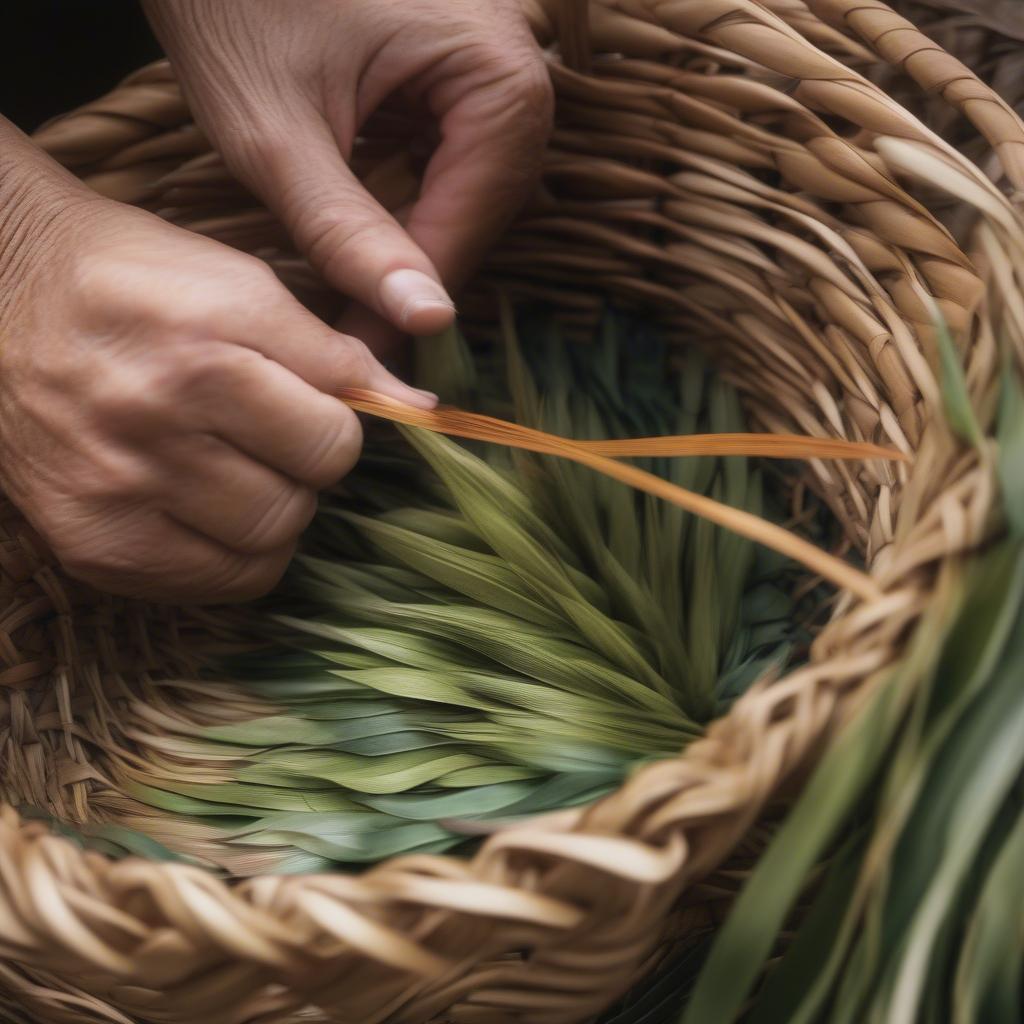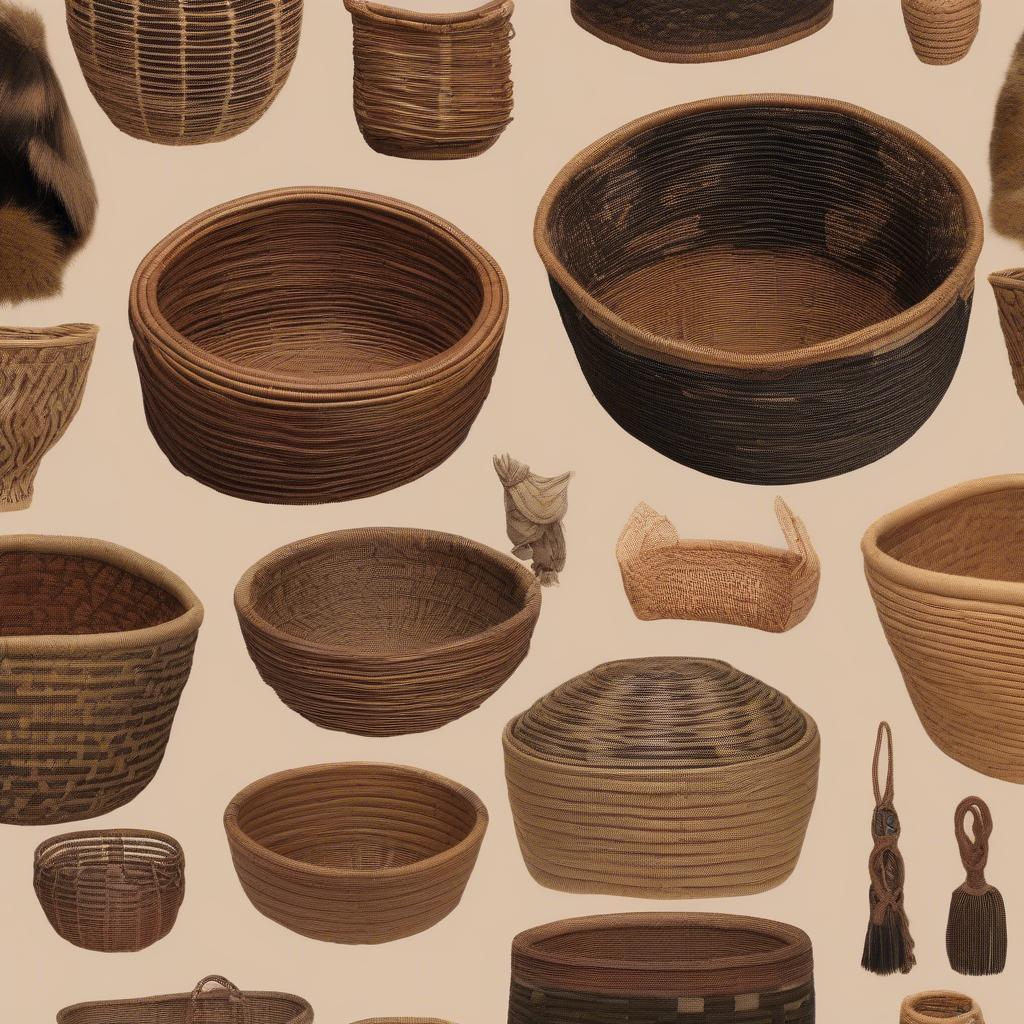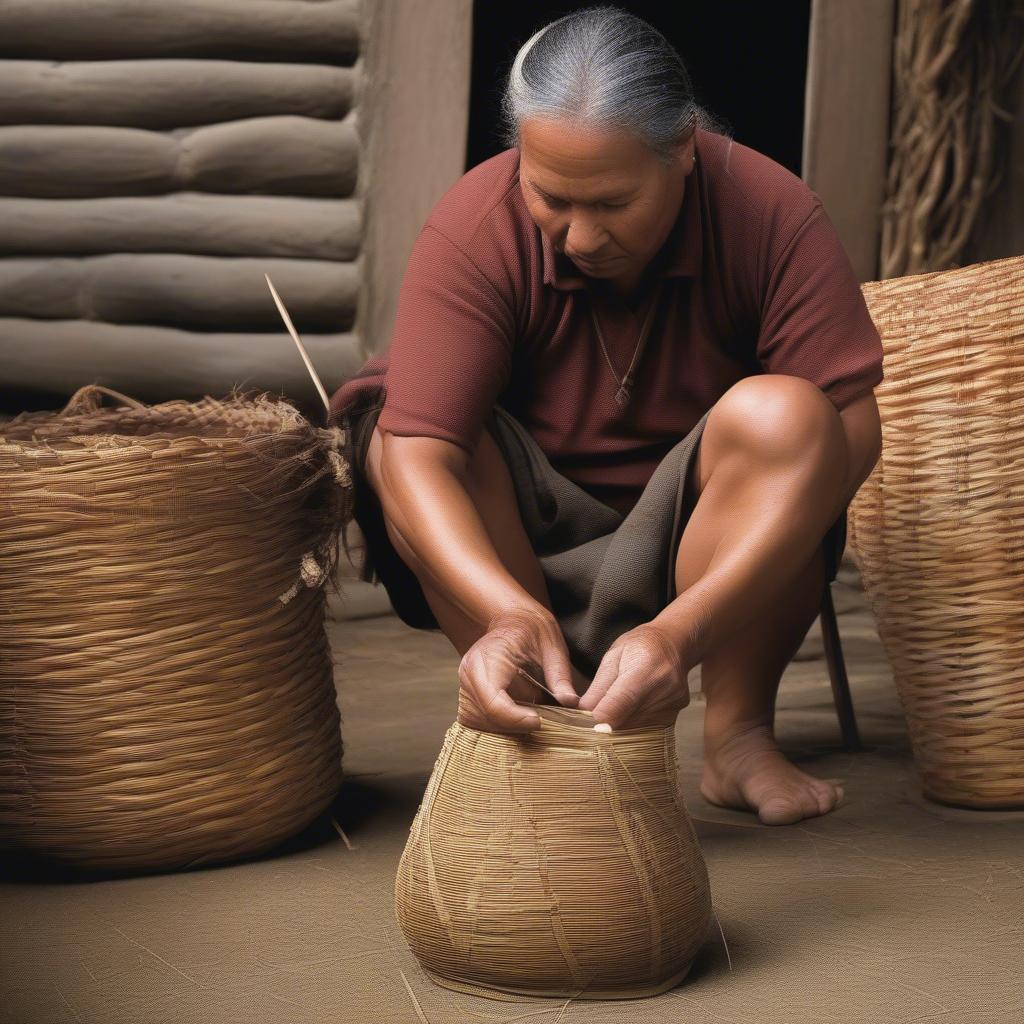Basket Weaving
What Plant Did Maori Weave Into Baskets?
The art of Māori weaving is deeply intertwined with the natural world, utilizing readily available plant materials to create intricate and functional baskets. Understanding What Plant Did Maori Weave Into Baskets provides a glimpse into their resourceful practices and rich cultural heritage. This article explores the diverse range of plants used, their unique properties, and the significance of these baskets within Māori culture.
Harakeke: The Cornerstone of Māori Weaving
One of the most prominent plants utilized by Māori weavers is harakeke (New Zealand flax, Phormium tenax). Its strong, fibrous leaves are incredibly versatile, making it ideal for crafting a wide variety of items, including baskets of all shapes and sizes. Harakeke comes in various cultivars, each with its own unique properties and colorations, allowing weavers to create stunning visual effects. From sturdy baskets for gathering food to finely woven kete (baskets) for storing precious belongings, harakeke plays a vital role in traditional Māori life.
 Maori weaving harakeke baskets
Maori weaving harakeke baskets
Kiekie: A Versatile Weaving Material
Another important plant used in Māori weaving is kiekie (Freycinetia banksii), a climbing vine that produces long, aerial roots. These roots are strong and flexible, making them suitable for creating a variety of woven objects, including baskets, mats, and even clothing. Kiekie baskets are often characterized by their distinctive texture and durability, demonstrating the resourcefulness of Māori weavers in utilizing readily available materials.
Beyond Harakeke and Kiekie: Other Weaving Plants
While harakeke and kiekie are the most commonly used plants, Māori weavers also incorporate other materials, depending on their availability and the specific purpose of the basket. These include pingao (Ficinia spiralis), a coastal sedge with tough, golden-brown leaves, and raupō (Typha orientalis), a bulrush found in wetlands, whose leaves are used for softer, more pliable baskets. The use of these diverse materials showcases the adaptability and ingenuity of Māori weaving traditions.
 Variety of Maori baskets made with kiekie, pingao, and raupo
Variety of Maori baskets made with kiekie, pingao, and raupo
The Significance of Māori Woven Baskets
Māori woven baskets are not merely functional objects; they hold deep cultural and spiritual significance. They are seen as taonga (treasures) passed down through generations, embodying the knowledge, skills, and artistic expression of their creators. Different basket types have specific purposes, from everyday use to ceremonial occasions, reflecting the interconnectedness of weaving with all aspects of Māori life.
What is the main plant used in Māori basket weaving?
Harakeke (New Zealand flax) is the most common plant used in Māori basket weaving.
What other plants besides harakeke are used in Māori basket weaving?
Kiekie, pingao, and raupo are other plants commonly used in Māori basket weaving, each providing unique properties and textures to the finished baskets.
The Art and Legacy of Māori Weaving
The practice of weaving continues to thrive within Māori communities, ensuring the preservation of this rich cultural tradition. By understanding what plant did Maori weave into baskets and the significance behind these creations, we gain a deeper appreciation for the artistry, resourcefulness, and cultural heritage of the Māori people.
 Maori weaver creating a kete
Maori weaver creating a kete
Conclusion
From the versatile harakeke to the durable kiekie and other unique plants, Māori weaving is a testament to the deep connection between people and nature. These woven baskets represent not only functional objects but also cultural treasures, carrying the stories and traditions of generations past. By exploring what plant did Maori weave into baskets, we uncover a fascinating world of artistry, resourcefulness, and cultural heritage.
FAQ
- What is the Māori word for basket? Kete is the Māori word for basket.
- Are Māori woven baskets still made today? Yes, Māori weaving is a living tradition and continues to be practiced today.
- What is the significance of harakeke in Māori culture? Harakeke is highly valued for its strength, versatility, and spiritual significance.
- Where can I learn more about Māori weaving? Museums, cultural centers, and online resources offer valuable information on Māori weaving.
- Can I purchase authentic Māori woven baskets? Yes, you can purchase authentic Māori woven baskets from reputable sources, supporting Māori artists and their craft.
- How can I identify authentic Māori weaving? Look for quality craftsmanship, traditional materials, and information about the artist or weaver.
- What are some common uses for Māori woven baskets? Māori woven baskets are used for carrying food, storing belongings, and in ceremonial practices.
Need further assistance? Contact us at Hanoi, Vietnam or Tech Avenue, Suite 12, San Francisco, CA 94105, USA. We have a 24/7 customer service team.
